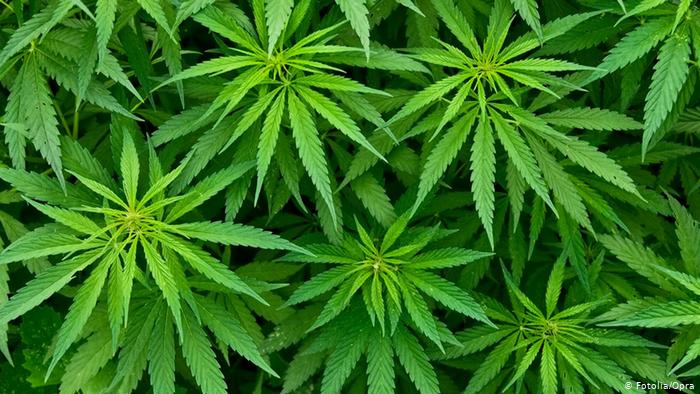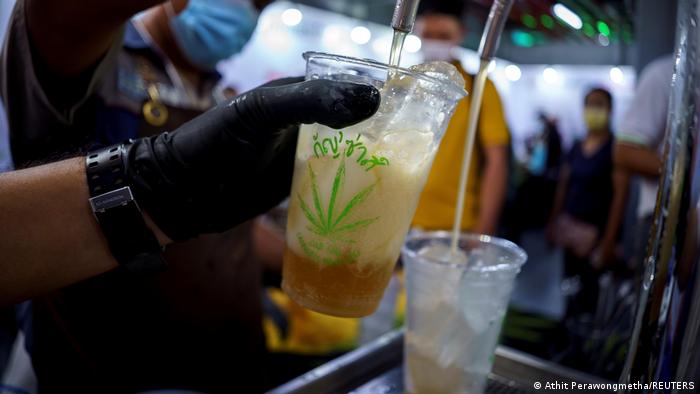Cannabis is more than a recreational drug. Non-psychoactive cannabis may have health benefits, from protecting against human coronaviruses to antibiotics.

Written content from Zulfikar Abbany
Scientists are researching a range of possible medical applications for the chemical compounds, often synthetic ones, that can be derived from cannabis.
Forms of cannabis have been said to provide pain relief over millennia, via a history of “herbal remedies” starting in Egypt, China, India and ancient Persia.
More recently, scientists have found that terpenes, a chemical in cannabis which helps give the plant its fragrance, may work as an antiviral agent against a human coronavirus called HCoV-229E.
That’s not the same coronavirus as SARS-CoV-2, the one that’s responsible for the COVID-19 pandemic.
But it is one of seven coronaviruses that infect humans. The terpene was tested in combination with a cannabis compound called cannabidiol (CBD).
Earlier in the pandemic, researchers in Canada suggested a synthetic form of cannabis may inhibit the novel coronavirus and stop it from infecting our bodies via ACE2 receptors. ACE2 receptors are gateways into the human body. They exist in lung tissue, oral and nasal mucus, kidneys, testes, and gastrointestinal tracts.
The US Food and Drug Administration (FDA) and the EU’s European Medicines Agency have approved a cannabis-derived drug called Epidiolex for treating epilepsy. Other drugs, such as Marinol and Syndros, have been approved for treating weight loss in people living with HIV/AIDS and nausea and vomiting. Some are used to treat the side-effects of cancer.

A man carrying a cannabis plant on public transport in Mexico, where there is a movement to have it legalized
There have also been studies into the use of cannabinoids, chemical compounds derived from cannabis, for treating dementia, Type II diabetes, and cancer. But these are early days in this line of research.
Medicinal cannabis: our current understanding
We’re only just beginning to understand what medicinal benefits cannabis and its variants hold. They may, for example, enhance or improve the effect of antibiotics. That’s a busy area of research that we’ll get into in a moment.
First, a few words on terminology. Scientists refer, on the one hand, to medicinal or synthesized forms of cannabis.
On the other hand, they talk of “crude” forms of cannabis, such as its leaves and seeds, which are most commonly what people consume recreationally and often illegally. That can be leafy marijuana (or Marihuana) or a thick resin, known colloquially as hash.
But it all starts with the Cannabaceae plant family and its descendant, Cannabis sativa L.
Cannabis consists of 540 chemical substances and at least 80, but possibly more than 100, chemical compounds.
Cannabis is not all psychoactive
Chemical compounds in cannabis are called cannabinoids.
The plant’s two best understood compounds are delta-9-tetrahydrocannabinol (THC) and cannabidiol (CBD). Both compounds are psychoactive, but to varying degrees. A psychoactive or psychotropic substance affects a person’s mental state — how the brain works. It affects mood, awareness, thoughts, feelings, and behavior.
CBD is less psychoactive than THC. In fact, CBD may even reduce the psychoactive elements in THC. CBD has antidepressant and anti-inflammatory characteristics.
Cannabidiol is not to be mistaken for cannabinol (CBN). CBN was the first cannabinoid to be detected. As with CBD, CBN has anti-inflammatory properties.
Binding to the body
Cannabinoids also exist naturally in our bodies. They are called endocannabinoids and are part of the endocannabinoid system, which allows phytocannabinoids, those derived from plants, to affect us.
THC, for instance, binds to “CB1” cannabinoid receptors in the brain, and that starts a process that releases its psychoactive effect.
Finally, it’s worth mentioning “hemp.” Hemp is a strain of cannabis, but it’s not the same as marijuana. It is grown industrially, and its stems and seeds are used in textiles and CBD oils for skin treatments or balms.
Cannabidiol and antibiotics
Researchers are also looking at CBD (cannabidiol) as a potential solution to antibiotic resistance.
Doctors say we use antibiotics too much and that it is reducing the ability of those medicines to kill bacteria.
Antimicrobial resistance is the same idea but it includes viruses, fungi and parasites — any microbial life that poses a threat to our health.
CBD has an antibiotic effect of its own, but it has “even stronger effects when combined with other antibiotics,” said Sigrun Lange, a reader in molecular pathology at the University of Westminster in the UK.
Lange and her team have looked at using CBD with antibiotics to fight a strain of Escherichia coli (E.coli), a bacterium that causes stomach cramps, diarrhea and vomiting. They also looked at a strain of staphylococcus aureus, which causes skin infections among other things.
Now, scientists typically distinguish between gram-positive and gram-negative bacteria. But we will have to save explaining that for another time.
Suffice to say: E.coli is gram-negative and staphylococcus aureus is gram-positive, and the main point here is that CBD can “enhance” the effect of specific, existing antibiotics against certain strains of those bacteria.
“You might need to use less of those antibiotics if you combined them with CBDs,” says Lange, highlighting a jackpot application for cannabis in medicine.
But there is some debate about its efficacy, depending on whether the bacterium is gram-negative or gram-positive.
The catch with CBD
Other researchers in Denmark, notably Janne Klitgaard and her PhD candidate, Claes Wassmann, say CBD “appears to be ineffective against gram-negative bacteria,” such as E.coli.
They also tested cannabidiol with the so-called “superbug” Methicillin-Resistant Staphylococcus aureus (MRSA) and found it to be “sensitive to CBD.”
But there are many strains of both E.coli and Staphylococcus, so all this research is preliminary for now.

Plus, there’s at least one other known drawback, and that’s been detected by all the teams, including one at the University of Queensland, Australia.
Mark Blaskovich and his lab used a chemically synthesized CBD in mouse models. They say it was effective against MRSA, gonorrhoea, meningitis and legionnaires disease.
But they found also CBD works better externally — on the surface of the skin, for instance — rather than when it’s used to treat an infection that’s in the blood.
“There are a couple of possible explanations,” Blaskovich told DW. “One is that CBD degrades within the body when it binds to other compounds [Ed.: like proteins or lipids/fats].” The drawback, however, is that “once it’s in the body, CBD gets absorbed by all the tissues and everything else, and there’s very little CBD left to kill the bacteria.”
Clearly, there is work still to be done, but the potential is great, as Lange suggests:
“CBD has been used for thousands of years as a therapeutic strategy against all sorts of bacteria, viruses and parasites, even the hunter-gatherers used it in medicine,” she says. “So, I don’t think it would have the same story as antibiotics in terms of resistance. But, then again, we’ve yet to explore that deeply. So, it’s hard to predict.” Read more from DW





